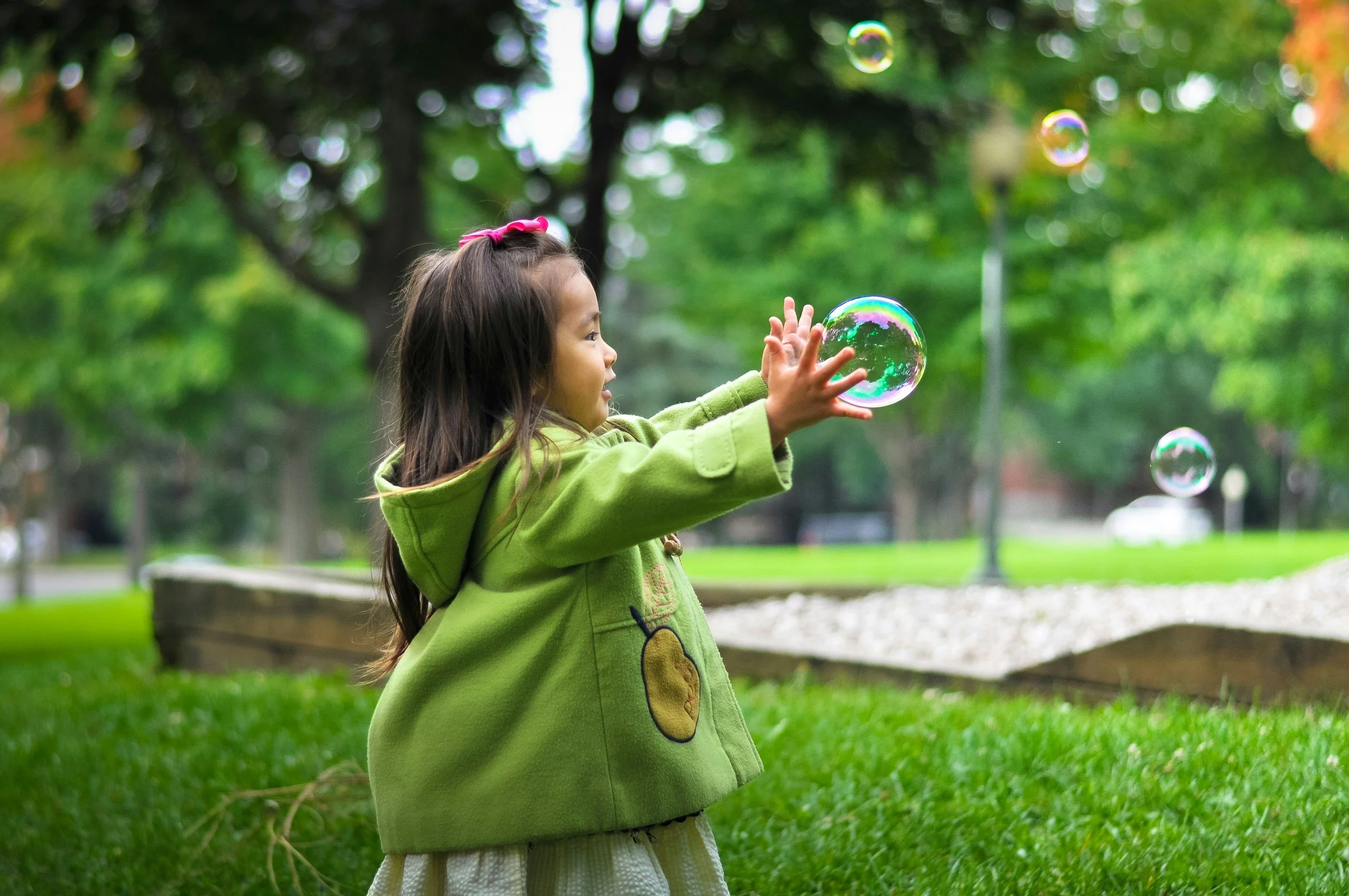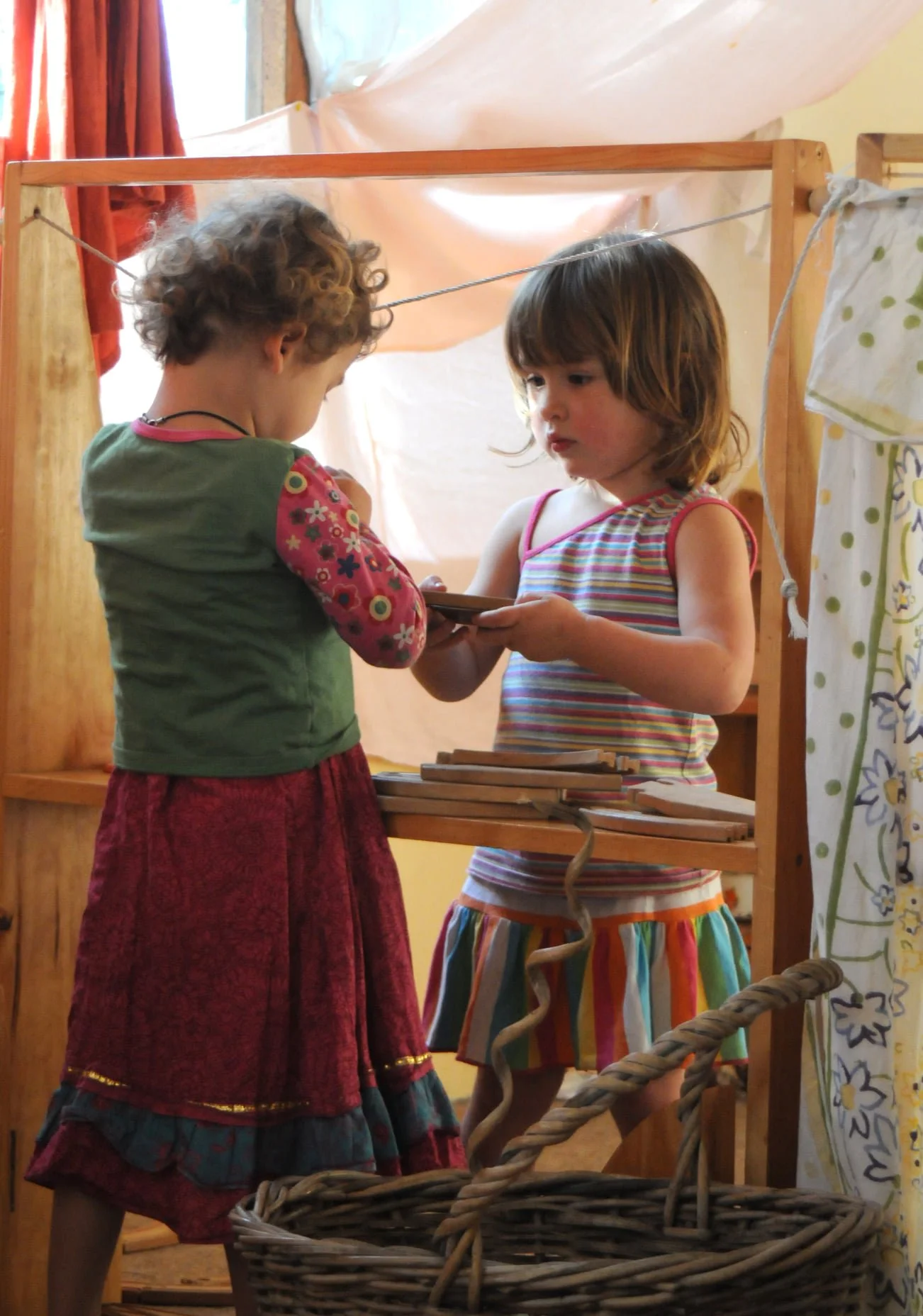Reclaiming Childhood - The world of toys and the case for ‘less is more’ - part 2
Featuring:
Gratitude - Imagination - Attention
When it comes to love and quality time, more is more. But when it comes to the world of “stuff” around your child, less is always more. ( Link Part 1).
I know it’s easier said than done, but it is doable, and I will guide you. From a developmental perspective, the most beneficial playthings we can give our children are natural and simple toys that are also of good quality. Things made well, from non-harmful materials, that last and wear well. A very true and also quite a crazy thought is that choosing simplicity, nature, and quality in these times is actually a powerful act of activism. It’s not the norm and goes against the grain of global corporate agendas, mainstream marketing, and societal sentiments. It’s brave, it’s wise, and it’s a responsible and kind act we can do for our kids, humanity as a whole, the earth, and also for our sanity. Less stuff, less clutter, less mess, less expenses, less whining and nagging for the next thing, and more absorbed play. Kids who can get lost in the powerful process of play and wonder. Which parent honestly doesnt want this?
Please note, dear parents, if you are reading this and are in the stage of “too freaken much” and seeing the effects and desperately want to do a total clean out and reset, the do this phasing in gently is wise. It may be hard for your kids to adjust, just as it’s hard to start walking to school instead of driving, eating healthier after having had lots of candy and processed foods or going to bed early after being a night owl.
Progress?
Everywhere we hear and see signs of progress. I’ve often been befuddled by what modern thinking labels as progress when, to me, it looks like regression. When the side effects seem to be making us worse off. Shouldn’t progress be about enhancing life, health, potential, and connection rather than setting us back or setting us up for disease, disorders, and disconnection? I can see that a lot of things that parents, schools and political leaders think would put our kids ahead of the game of life, actually, put them behind and threaten to diminish or even cripple their overall success in all aspects of life.
As we hone in on this broad and essential topic of Play, we are now looking more deeply at the unavoidable sub-topic of toys. The things we surround our kids with in the name of play. Toys, in their nature, should be in the best interest of the child’s greater good of the child. That sounds about right, doesnt it? And yet many toys today do the opposite.
Cultivating Gratitude
Appreciation and gratitude for what we have, the people we love, the world and its resources, and for just being alive have grown in the soil of early childhood.
We live in a time where so much is disposable; everything can be bought with a click, and getting and accumulating stuff is part of who we have become as humans. And …. we also want our kids to be good humans with good values, and one of these values is a sense of gratitude. No parent wants to raise a spoiled, entitled, ungrateful child who will one day become a spoiled, entitled, ungrateful adult. Yet we still often expect gratitude as part of good manners that the child must somehow know to do and be told to do. Real gratitude is an inner state that grows in the right conditions and cannot be forced. Achieving a state of gratitude is good for our overall health and has been scientifically proven to be good for our brain development, while also releasing feel-good chemicals, affecting how we see and experience the world. The brain wired for gratitude sees and experiences life in an elevated and more empowered way. Gratitude feels safe, and the nervous system calms in safety. Without the need to respond in survival mode, the brain can get on with its task of learning and growing.
To put it as straight as I can, gratitude is not cultivated from getting often and having alot, but rather from having less. It grows in the soil of caring for what you have, the uncomfortable process of waiting and anticipation, and the pain of experiencing not having all your desires met when you want them to. An inner state of gratitude is nurtured even more by the joyful relationship that is built with a toy when the toy allows room for the child’s inner work, projections, and imagination. For the child’s heart and mind to synergise with the will of the body. We can’t achieve this by giving more and more stuff to the child or with toys that don’t activate of their inner faculties of the child.
“If your child has many versions, or copies, of the same toy, consider reducing the number to a more manageable and lovable little group. This is especially important if the original toy (not the “clones”) is one your child has imbued with special affection and loyalty. Our best intentions to increase the circle of love surrounding our child can have the opposite effect. By overwhelming a true connection with too many superfluous ones, we can send a message that relationships are disposable.”
― Kim John Payne, Simplicity Parenting: Using the Extraordinary Power of Less to Raise Calmer, Happier, and More Secure Kids
Imagination, the root of intelligence.
In ‘olden times’, a parent or family member would lovingly fashion a figurine out of clay, wood, or a dried-up corn husk. A doll would be sewn from fabric, and other toys carved from wood. Stones and sticks would turn themselves into toys, play-play tools, and weapons, and the imitation of daily tasks around the child was played out with great seriousness. The child could turn a butternut into a baby, wrap it in cloth with tender maternal responsibility, and carry it around for days.
It reminds me of the stories I gathered while running my Holistic Nanny Trainings. The groups of women that come through the training are usually from rural areas or townships in Africa, small islands in the Philippines, or villages in Pakistan. I often hear about their life of play as children. It was almost always poor, but they hardly remember feeling poor. Their toys were few but precious, and boy, did they play. They describe, with tearful fondness sometimes, the clay animals they made at the river or the dolls from cornhusk or old rags that become prized possessions. Even if it was a commercial toy, it was treasured because only a few were owned, and often, they came after a long wait. These stories, however, came only from women over thirty years old. All the younger women had more screens in their lives and more access to cheap toys, and sadly lacked these kinds of joyful memories.
The simplicity of these toys that existed before mass-produced plastic toys fed the imagination, strengthening it and providing children with the perfect tool or symbol to practice what they saw going on around them and what was innate within them.
We can make room for this natural purpose and power of play by learning how to embrace and protect simplicity.
Here are my Kindergarten kids building a house collaboratively with our furniture and large sheets. This could go on for a whole day, and it would be a favourite game for weeks. (My Rosy Cave Kindergarten 2010)
Not a very good photo, but a good example of my students, Ruby and Mila, in my Kindergarten, emmersed in cooking with sand and leaves in old tin pots, using a rock as the stove and simple cloths as their dress up. They could play for 45 minutes or more straight like this, and come back to this game again and again (My Rosy Cave Kindergarten 2010/11)
The connection between imagination and attention spans
I recently, while writing this, I asked my son Luca what he remembers as his best play times as a child. He said it was being immersed in imaginative play, creating the storyline from scratch, and the thrill of it unfolding, and this resulted in him being highly invested in the game for hours and sometimes days. This was because of being an active participant in creating it.
Just as the imagination is like a muscle, so is the innate will force of a young child. When the child has to engage with an inner effort, activating his or her imagination repetitively, it also simultaneously strengthens their Will. The toy then comes to life, but not through instant gratification, but through inner engagement and effort. When we work for something and it responds and rewards us, it builds those neuro pathways in our brains, setting us up with the wiring and beliefs on a deep physiological level that work and focus are good, safe and even enjoyable. The reward comes after putting in the work, but it’s also in the process of the work. This work, this effort, comes naturally with children under 9 years old and especially in the years under 6 years old because they are in the time of their will force being in full action and development, laying down a blueprint for the rest of their lives. Work equals investment, and investments result in a child’s full attention being engaged and strengthened.
Mila and Francesca - My Rosy Cave Kindergarten 2010
Unstructured child-led play with simple and open-ended toys allows the child to bring to life their toys, entering storylines and possibilities that come from themselves. When children are fully engaged like this, they can play in deep focus and flow for an hour or more. What parent wouldn’t want this? And can you see how this plants the seed for concentration, creativity, innovation, problem-solving, and even collaboration for the rest of your life?
Luca and Bree - My Rosy Cave Kindergarten 2009
“The most beneficial playthings we can give our children, from a developmental perspective, are natural and simple toys that are also good quality.”
In order to really progress as a species, we need to stay focused on what is simple and good in this world, and what keeps us growing in connection and wisdom. Nothing does this more than disrupting the flow of consumerism, slowing down and embracing simplicity. This is where true intelligence and resilience will rise from.
So as I wrap up part 2 , I’m hoping that you’re feeling more informed, inspired and even possibly totally fired up to embrace the incredible path and power of simplicity. Learning and understanding the world of play and how to support this for your child will have a possitive and profound impact on your child and family.
Meet me in part 3, where we will talk about toys and play in the light of intelligence, stimulation and boredom.
With Love, Jade
Recommended References and resources:
― Kim John Payne, Simplicity Parenting: Using the Extraordinary Power of Less to Raise Calmer, Happier, and More Secure Kids








